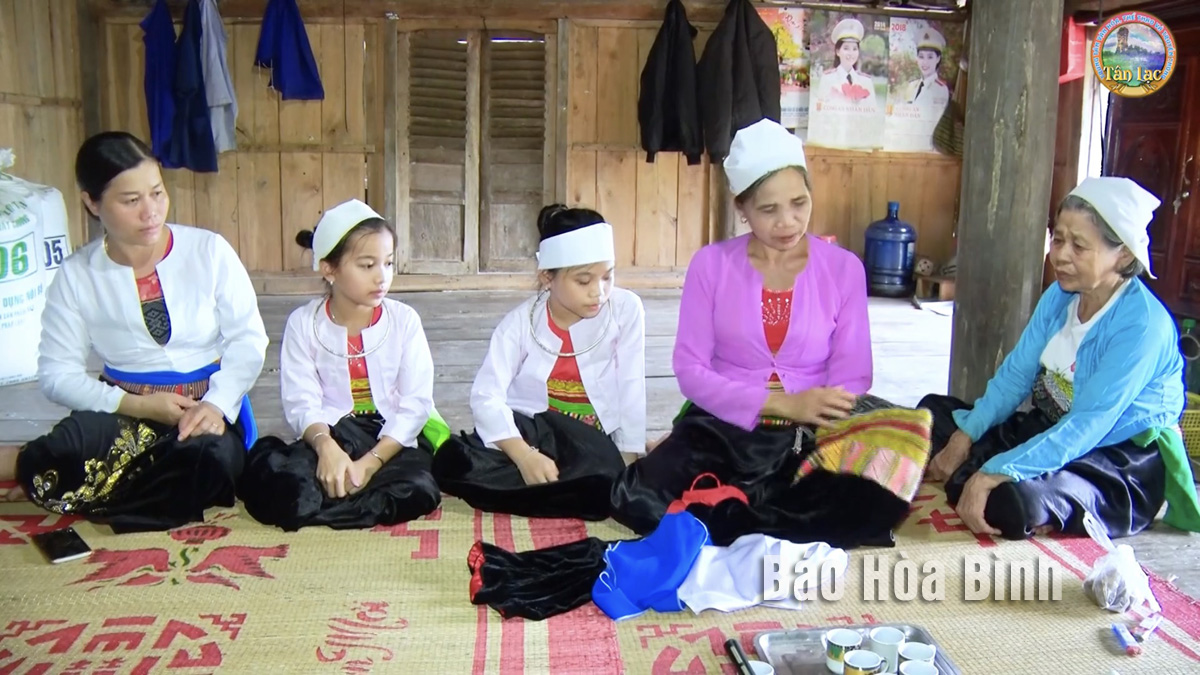
Along with the process of integration and development, traditional cultural identities of the Muong ethnic community in general, and Muong ethnic people in Tan Lac district in particular, are at risk of falling into oblivion. Therefore, many clubs have been established in the locality to preserve and promote the beauty of the ethnic group’s cultural identities.
Tan Lac district preserves Muong ethnic group’s cultural identities.
Bui Thi Luyen, head of Muong people’s cultural preservation and
promotion centre in Man Duc township's Muon Phoi residential area, said
previously in daily life and holidays, Muong ethnic people wore traditional
costumes and played gongs around their village with the aim of praying for a
peaceful year, good luck and a bumper crop. However, in modern life,
traditional costumes or gongs are no longer commonly used.
Muong people’s costumes have been adjusted to suit modern fashion trends.
Instead of using brocade fabric with manual embroidery, their costumes have
been made by synthetic fabrics with industrial print patterns. Belts were also
replaced by ready-made items. Not only costumes, the preservation of language
is also a big concern.
Bui Minh Hong, head of the Culture and Information Department of Tan Lac
district, said that currently, many clubs have been established in the district
such as Mo Muong club, and other clubs to preserve Muong language and costumes.
The district has encouraged its localities to continue to replicate the club
model to preserve the language and costume of the Muong people.
With an increasingly vibrant and widespread emulation movement aimed at building cultured residential areas and cultured families, Yen Thuy District has been making steady progress toward improving both the material and spiritual well-being of its people, while fostering a civilized, prosperous, beautiful, and progressive community.
Once lacking recreational spaces and community facilities, Residential Group 2 in Quynh Lam Ward (Hoa Binh City) has recently received attention for the construction of a new, spacious, and fully equipped cultural house. The project followed the model of state support combined with public contributions in both labor and funding.
The "All people unite to build cultural life" movement, which has been effectively integrated with Kim Boi district’s socio-economic development goals, is fostering a lively spirit of emulation across local residential areas, hamlets, villages, public agencies, and enterprises. In addition, through the initiative, traditional cultural values are being preserved and promoted, while community solidarity and mutual support in poverty reduction and economic development are being strengthened.
A working delegation of the Hoa Binh provincial People’s Committee led by its Permanent Vice Chairman Nguyen Van Toan on June 11 inspected the progress of a project to build the Mo Muong Cultural Heritage Conservation Space linked to tourism services in Hop Phong commune, Cao Phong district.
Born and growing in the heroic land of Muong Dong, Dinh Thi Kieu Dung, a resident in Bo town of Kim Boi district, in her childhood was nurtured by the sweet lullabies of her grandmother and mother. These melodies deeply imprinted on her soul, becoming an inseparable part of her love for her ethnic group's culture. For over 20 years, this love for her hometown has driven Dung to research, collect, and pass down the cultural values of the Muong people to future generations.
In the final days of May, the Ethnic Art Troupe of Hoa Binh Province organized performances to serve the people in remote, mountainous, and particularly disadvantaged areas within the province. These were not just ordinary artistic shows, but they were the meaningful journeys aimed at spreading cultural values, enhancing the spiritual life of the people and contributing to the preservation of ethnic minority cultural identities.



